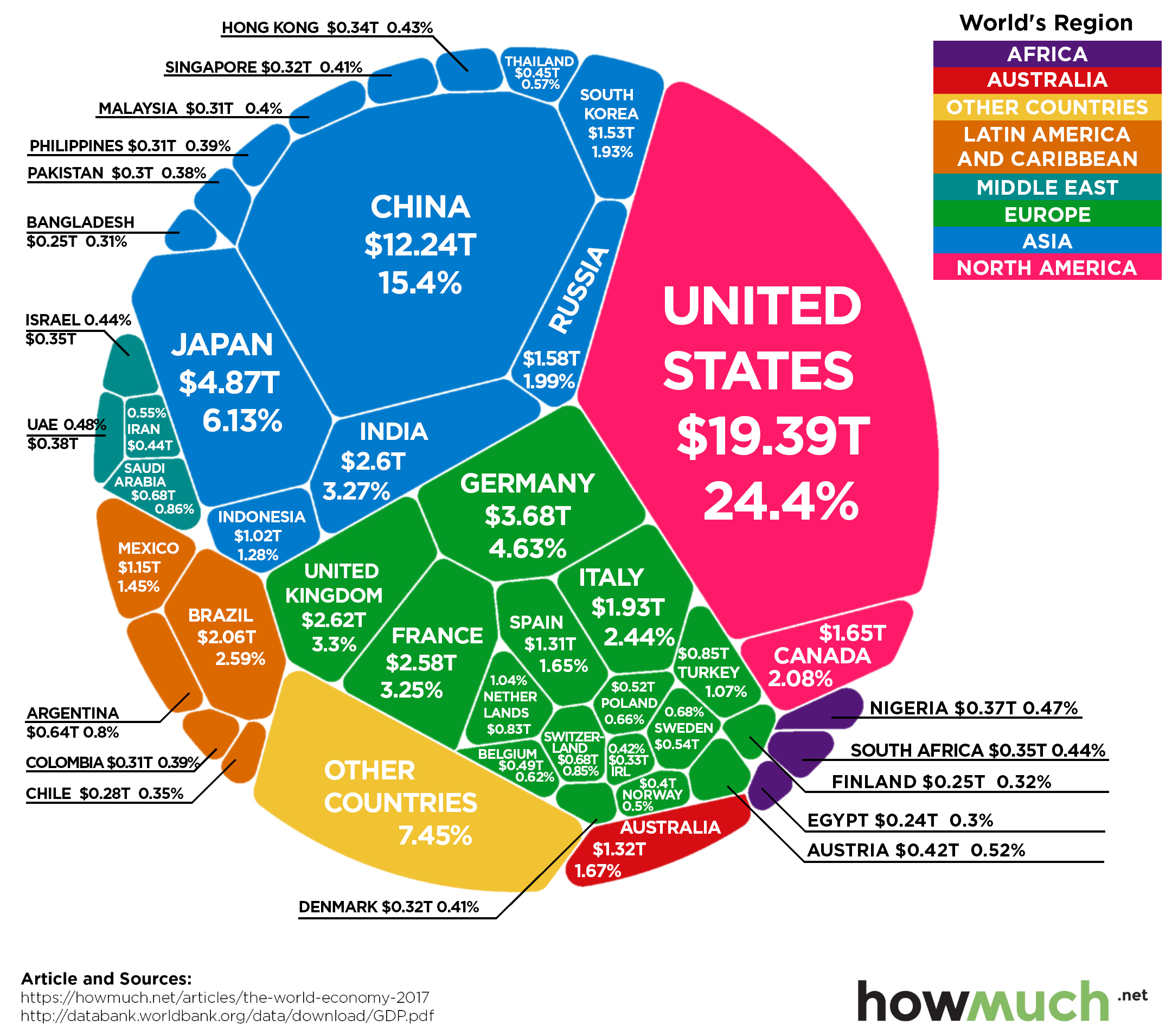The world economy is in a never-ending state of flux.
The fact is that, as Visual Cpiatlists’ Jeff Desjardins notes, billions of variables – both big and small – factor into any calculation of overall economic productivity, and these inputs are changing all of the time.
Buying this week’s groceries or filling up your car with gas may seem like a rounding error when we are talking about trillions of dollars, but every microeconomic decision or set of preferences can add up in aggregate.
And as consumer preferences, technology, trade relationships, interest rates, and currency valuations change — so does the final composition of the world’s $86 trillion economy.
Continue reading “Visualizing The $86 Trillion World Economy In One Chart”









